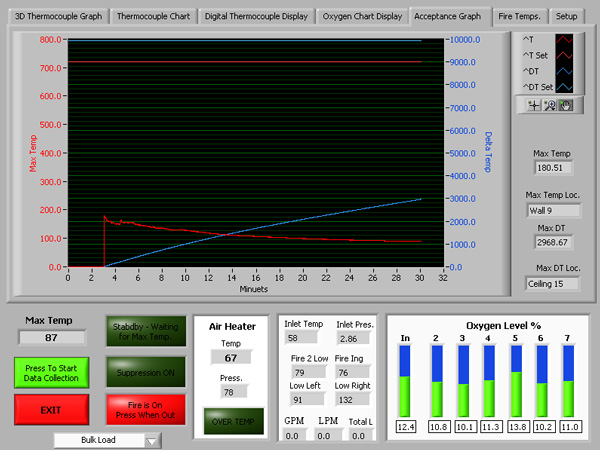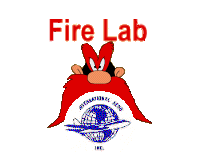FAA orders airlines to install new fuel tank inerting
system to reduce chance of explosion
A cost-benefit analysis still must be done and airlines need time to
plan for the change, so the requirement is not expected to take effect
for at least two years. Once the rule is issued, the
fuel-tank inerting program will be phased in over seven years. During
that time existing planes will have to be retrofitted with the device
and new planes will have them as standard equipment.
15 February 2005
Flammability Reduction Means
(Fuel Tank Inerting) - FAA SPECIAL
CONDITIONS No. 25-285-SC
Read
more
Special Conditions: Boeing Model 747-100/200B/200F/200C/SR/SP/100B/300/ 100B SUD/400/400D/400F
Airplanes; Flammability Reduction Means (Fuel Tank Inerting); Final Special Conditions; Rule
Propulsion and Mechanical Systems Branch, FAA, ANM-112.
StillBrooks Labs secures
new testing facility. This 31,500SqFt is the new home for the
Materials Lab and new larger fire HOT room. Located near UL in
Chicago the planning and construction schedule are under way.
A International marine organization (IMO/Cir1007) 500M3
.total flooding test chamber is still planed for the close end of this
building, along with 100M3, 50M3 25M3, 10m3 5m3
and small scale devices. This will allow for full scale agent
development testing and third party approvals all in one location . We
will relocate all of our current test fixtures to this location and
combine the data acquisition system, digital video monitors all into a
central control room for ease of operation. Sitting on 3.5 acre
with a chain link fence and barbed wire the facility is secure and will
allow for improved security clearance on our military programs.
An additional 17,000 SqFt office complex is located on an additional 4
acres adjacent to the fire lab.
The
The
Cargo Bay is next..
SBL and FirePASS developed
the first "Gate to Gate" fire Suppression system for commercial
airliners
StillBrooks Laboratories and Fire Pass have
prefecting a
novel method of protecting airliner cargo compartments and dry
bays. Low
Pressure water mist is proving to be an answer to Halon
Replacement in commercial aircraft cargo compartments. When combined
with Hypoxic air the patented lcombination is far
surpassing any halon alternative material tested to date. In
the links below the temperature and test data as shown. Minimum
Performance Standard for Aircraft Cargo Compartment Halon
Replacement
Fire Suppression Systems final rule was issued this summer.
Federal Aviation Regulations (FARs) and Joint Airworthiness
Requirements (JARs) require fire suppression systems for some
classifications of cargo compartments. In the past, the aircraft
industry selected Halon 1301 total flood fire suppression systems as
the most effective means for complying with the regulations. Because of
the ban on production of Halon 1301 (effective January 1994, as
mandated by the Montreal Protocol), new fire suppression systems will
need to be certified when Halon 1301 is no longer available. The tests
described in this standard are one part of the total Federal Aviation
Administration (FAA) and the Joint Aviation Authority (JAA)
certification process for cargo compartment fire suppression systems.
In the Minimum Performance Standard data screen below
the red line
(maximum device temperature) and the blue line
(accumulated maximum temperature over time), can not cross the Halon
1301 level
of safety (upper flat matching color lines). If the data does not
exceed the level of safety demonstrated with HALON the alternative
agent passes. The test MPS was developed in conjunction
with the International Aircraft Fire Protection Systems Working Group
(IAFPSWG), over the last five years. In the below chart the systems
passed the FAA requirements. To date every test has been better
than HALON 1301. Temperature column shows values 1" below the ceiling
and along the side walls of the device. Oxygen column shows O2
concentrations at 5 locations inside the device, and the input.
The Mister pressure on the below test was at 2.86 psi ( yes two and
three
quarter pounds). The Low Pressure Dual Fluid misting nozzle was
developed by NAVAIR in the mid 90's. It has been used on several
full scale aircraft and flight test. One big advantage if the nozzle is
it will not clog, and it performs well from 2 through 100 psi.
Mixing the water and Hypoxic conditioning air and variable pressures
and
still obtaining the same size water droplet. Water enhance were
also successfully tested. It is felt that they will help prevent flame
spread and help wet the area as the O2 levels are reduced. The
mister is
capable of dispensing the water horizontally up to 7 meters at one bar
pressure. The best part is everything is already on the aircraft,
air-conditioning, water, Interting system membranes, Its too
easy.
Check back for more details and test data.

Screen grabs from the
DAQ system at the end of each test on these links

- HOME
- US EPA, SNAP, ISO, ICAO,
FAA US DOT,
NFPA, SAE, FM, NIST, ATA, UL, SSL, AS/NZS, ODP , GWP , Pyrogen ,
PYROGEN
, Airline Cargo conversions , Class A fire , Class B fire , Class C
fire
, EMAA, Encapsulated Micron Aerosol Agent, FAR 25. Aircraft Cargo
Fires,
Telecommunications fires , Transportation fires , Petrol chemical fires
, Fire detection, Automobile Fire , Truck fires , Train fires ,
Building
fires , Structural fires , petroleum fires , engine fires , marine
fires
, cargo fires , wood fires , Halon flooding , UL 1058, aircraft fire
protection
, aircraft crash , airline cargo fire , airline fire protection , FAA
Technical
center , Oil rig fires , gas rig fires , vehicle fires , electrical
fire
suppression , computer room fires , ship fires , machinery fires ,
merchant
vessel fires , train fires , generator fires , battery fires , Wheel
fires
, brake fires , tire fires , car fires , home fires , Loss productivity
, boeing fire test , 737 fire test , NRL , Naval Research
Laboratory
, Naval air systems command , NASC , NAVAIR , AS/NZS 4487:1997 ,
Joint strike fighter , JSF, HARC , NTSB , Transport canada , NIST , FAA
Technical Center , Thermal Acoustic Insulation Blankets , IMO ,
International
Maritime commission , USCG , United states coast guard , MCA , Pyrogen
Ltd. Pyrogen Corp. Sdn. Bhd. , IAFC , IFPA ,
